Strap-on skates are a simpler, more compact way to enjoy snow or pavement skating without the hassle of bulky, expensive gear. Snowfeet are mini ski-like skates that attach to your winter boots, letting you glide on snow. Wheelfeet, on the other hand, bring the same concept to paved streets, turning your regular shoes into roller skates.
Here’s why they’re a game-changer:
- No special boots required: Use your existing winter boots (Snowfeet) or sneakers (Wheelfeet).
- Easy to carry: Both fit in a backpack, unlike skis or traditional skates.
- Affordable: Snowfeet start at $150, while Wheelfeet cost around $599, far less than most full setups.
- Quick to learn: Most people get the hang of them in hours, not weeks.
- Knee-friendly: Less strain compared to skiing.
Snowfeet are perfect for snowy slopes, parks, or even your backyard, while Wheelfeet work well for city streets and paved trails. Both options make skating fun, accessible, and easy to try. Whether you're a beginner or experienced, these skates let you enjoy outdoor sports without breaking the bank - or your back lugging gear around. :)
What Are Snowfeet Strap-On Skates?
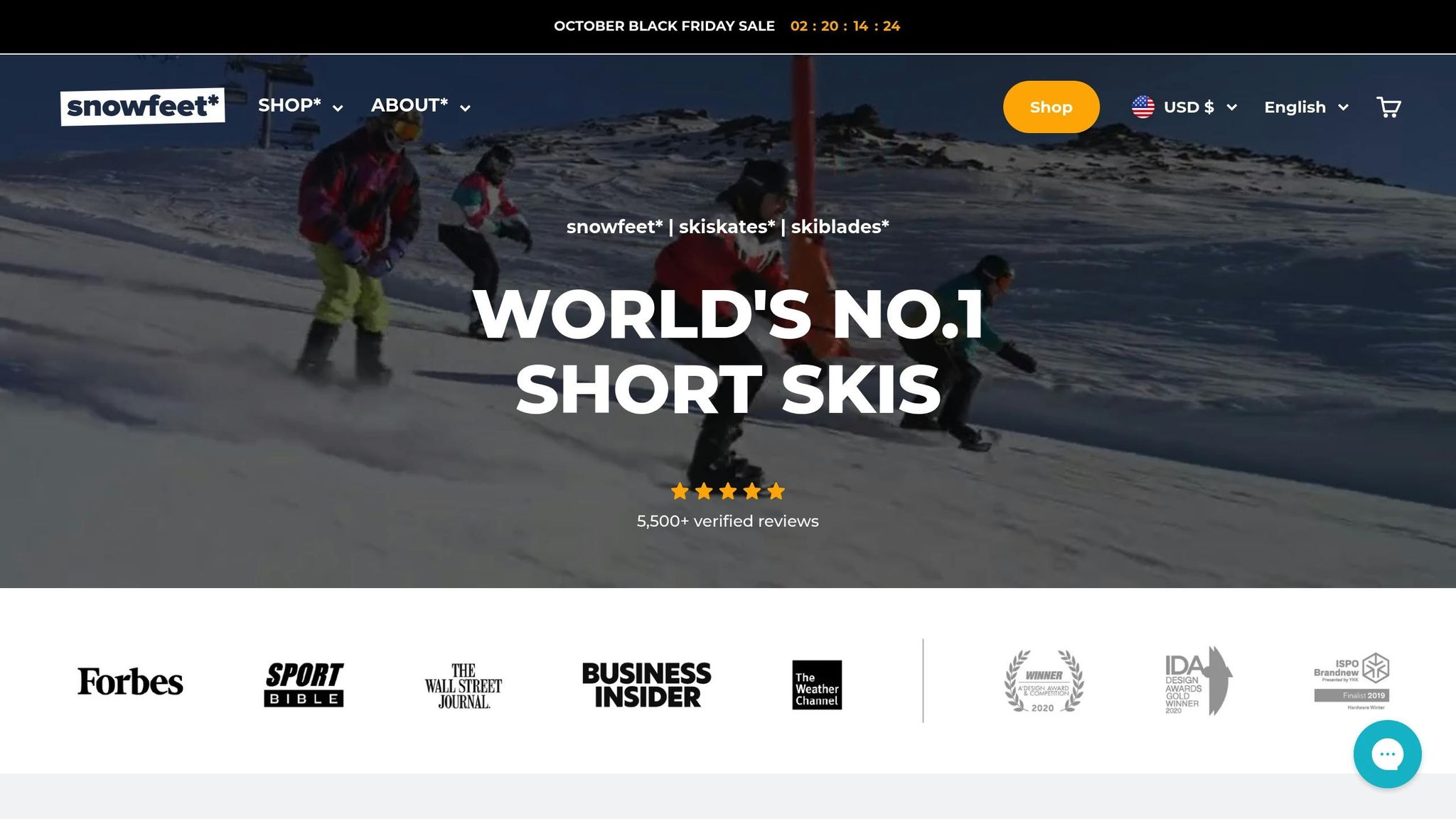
Snowfeet strap-on skates are like a mash-up of mini skis and ice skates. They attach directly to your winter or snowboard boots, giving you the glide of skis but with the nimbleness of skates - all without needing any fancy new footwear.
The genius of the strap-on design is its simplicity. No specialized ski boots, no tricky bindings, no extra expense for custom fittings. Just strap them on, and you're ready to hit the snow. Let’s dive into what makes Snowfeet so special.
Snowfeet Design and Features
Snowfeet are built tough. They're made from fiberglass-reinforced plastic with metal edges, which means they can handle real mountain conditions while giving you solid grip and control on snowy surfaces.
The adjustable binding system is a game-changer. It works with almost any winter boots - whether it’s your everyday snow boots or snowboard boots. This means you can get started in minutes without needing to rent or buy extra gear.
Another big perk? Portability. Unlike traditional skis that need roof racks or bulky bags, Snowfeet fit right into a standard backpack. Whether you're driving to the slopes, hiking, or flying out for a winter getaway, transporting them is a breeze.
And they’re versatile, too. While regular skis are mostly for groomed slopes, Snowfeet can handle slopes, parks, hiking trails, or even your backyard. Basically, any snowy hill can become your own mini adventure spot.
Benefits of Snowfeet Strap-On Skates
One of the best things about Snowfeet? They’re easy to learn. Traditional skiing can take weeks to get the hang of, but most people feel comfortable on Snowfeet after just a few hours. Their shorter length makes balancing simpler, and the lower center of gravity makes them less intimidating than regular skis.
They’re also easier on the wallet. Snowfeet models cost between $250 and $775, and since you can use your existing boots, you avoid the hefty price tag of a full ski setup, which usually runs over $1,000.
On top of that, they’re kinder to your body. The shorter design and different stance mean less strain on your knees, making them a great option for anyone with joint issues or recovering from injuries.
Snowfeet vs Traditional Ski and Snowboard Gear
Here’s how Snowfeet stack up against traditional ski setups:
| Feature | Snowfeet | Traditional Skis |
|---|---|---|
| Length | 15–47 inches (38–120 cm) | Over 59 inches (150+ cm) |
| Boot Requirement | Any winter boots | Requires specialized ski boots |
| Transport | Fits in a backpack | Requires roof rack or ski bag |
| Learning Time | Hours | Weeks to months |
| Price Range | $250–$775 | $1,000+ complete setup |
Traditional skiing often emphasizes that longer skis mean more stability and speed. But Snowfeet flip that idea on its head. Their shorter length makes them more maneuverable, so carving turns and doing tricks feels faster and more accessible.
In 2023, Snowfeet caught the spotlight at ISPO - the world’s biggest sports equipment trade show - earning recognition for their fresh approach to winter sports. The product itself was born out of a crowdfunding campaign in the Czech Republic, started by two friends with a big idea.
With 5,500 verified reviews averaging 4.9 out of 5 stars, it’s clear that people love them. Many users rave about how much easier and more fun Snowfeet are compared to traditional skis.
For anyone who’s ever been put off by the cost, complexity, or physical demands of traditional skiing, Snowfeet offer a fun, approachable alternative that’s all about enjoying the snow on your terms.
What Are Wheelfeet Strap-On Skates?
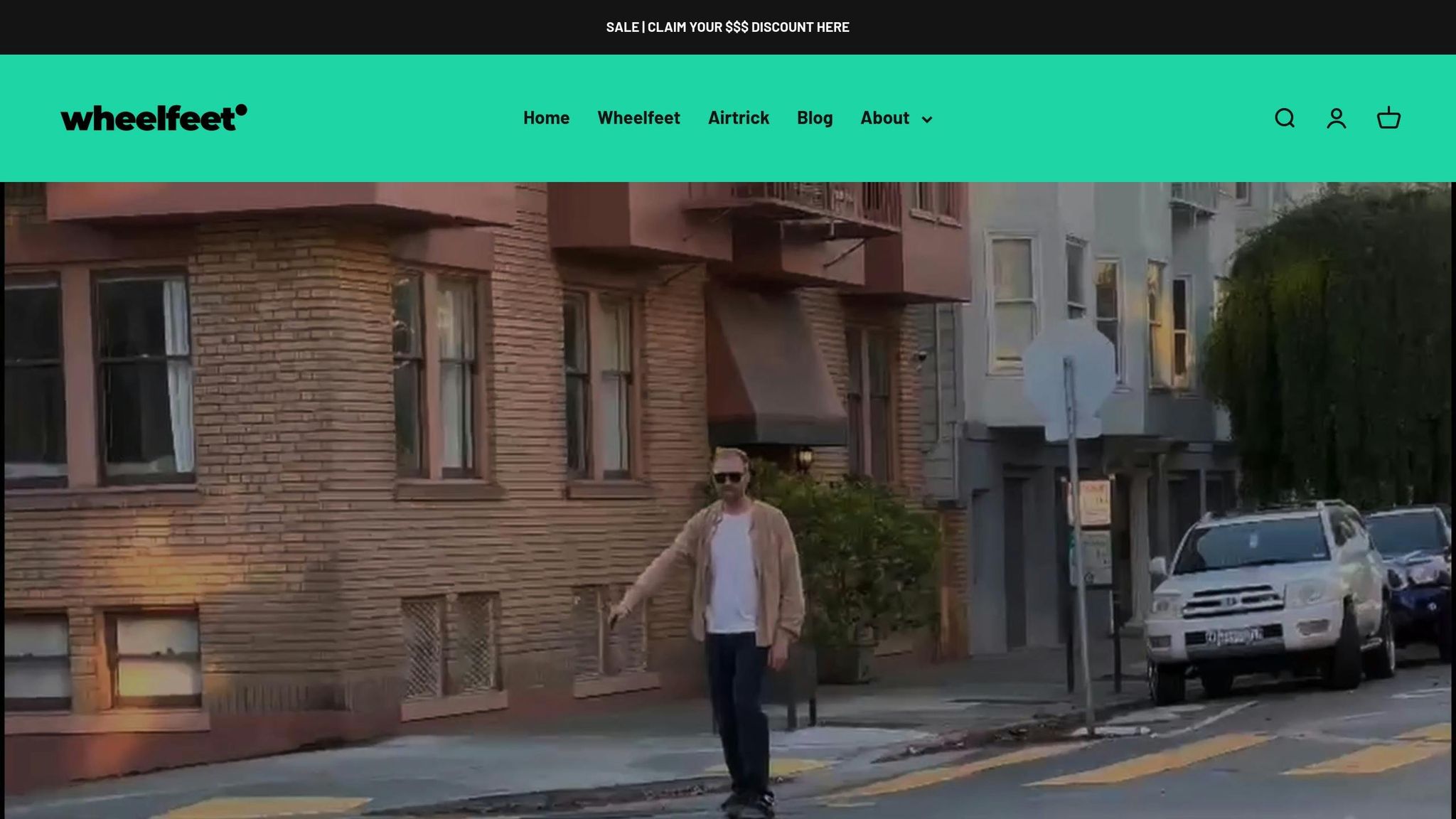
Wheelfeet strap-on skates let you turn your everyday shoes into skates. Whether you're rocking sneakers, sporty kicks, or lightweight boots, these skates attach directly to your footwear, skipping the hassle of traditional inline skate boots. Plus, their compact design and adjustable bindings make them a breeze to use.
Wheelfeet Design and Features
Wheelfeet are built with both convenience and performance in mind. Thanks to their adjustable binding system, they fit shoe sizes ranging from 6 to 13 US (38 to 47 EU), offering a snug and secure fit for most adults. The bindings keep your shoes firmly in place while ensuring you stay comfortable.
Weighing just 4.8 lbs (2.2 kg) each, these skates are lightweight enough to toss into a backpack or tote, making them ideal for city adventures or a quick outing to the park. Unlike traditional inline skates, which can be bulky and require a separate carrying case, Wheelfeet are much easier to transport.
Their electric design can hit speeds of up to 15 mph (25 km/h) and covers about 9 miles (15 km) on a single charge. The regenerative braking system adds a clever touch - it not only provides smooth stopping power but also recharges the battery as you brake, giving you more time to enjoy the ride.
For the best experience, pair them with sports shoes that offer good ankle support and fit securely.
Advantages of Wheelfeet Strap-On Skates
Wheelfeet pack plenty of perks that make them stand out from traditional skates. One of the biggest wins? They're incredibly easy to use. Forget the steep learning curve of inline skates with their stiff, specialized boots. With Wheelfeet, you're skating in shoes you already know and love, which helps most people feel confident right from the start.
At around $599, Wheelfeet are also a budget-friendly alternative to many high-end inline skates. Since you don’t need to invest in extra gear like specialized boots, you're saving money without sacrificing quality.
Their versatility is another standout feature. Unlike skates designed for specific surfaces like smooth rinks, Wheelfeet are ready for all kinds of paved terrain - perfect for city streets, park paths, or recreational trails.
Much like Snowfeet, Wheelfeet simplify skating by eliminating the need for special footwear, making the activity more accessible to everyone. They also align with efforts to promote eco-friendly transportation. These skates produce zero emissions and offer a fun, sustainable way to get around town.
For beginners, the combination of your own familiar shoes and the stability of the strap-on design makes it easier to focus on balance and movement. No uncomfortable boots, no distractions - just pure skating fun.
How Do Strap-On Skates Work?
Strap-on skates let you turn your regular shoes into skating gear with the help of an adjustable binding system. Instead of needing dedicated skate boots, these bindings securely attach to your existing footwear, making them incredibly convenient.
Here’s how it works: toe and ankle straps wrap around your shoes or boots, holding them firmly in place. These straps connect to a sturdy platform underneath - designed with ski-like runners for Snowfeet or wheels for Wheelfeet - that supports your weight and allows for smooth movement. This setup also keeps the natural flexibility of your footwear intact, which is a key feature of Snowfeet.
For Snowfeet, the binding system is adjustable using a screwdriver, making it compatible with a variety of winter shoes or snowboard boots. The straps can be customized by selecting the right holes for a snug fit. If you have smaller feet, you can reposition the straps and trim any excess material. For larger boots, swapping out the straps for longer ones might be necessary.
"The unique attachment system allows you to securely fasten Wheelfeet to your favorite shoes, transforming them into roller skates without the need for special boots." - Wheelfeet Store
Wheelfeet uses a similar system but is tailored for sneakers and lightweight boots, making it ideal for urban skating. Both Snowfeet and Wheelfeet share the same core design but are optimized for different terrains - Snowfeet for snowy slopes and Wheelfeet for city streets.
Setting up Wheelfeet is just as easy as Snowfeet. Use a screwdriver to adjust the bindings to your shoe size. Make sure the toe strap fits securely across the front of your shoe, with the ankle strap snugly wrapped around the back.
For the best experience, choose waterproof shoes with firm ankle support. Snowboard boots are perfect for tackling rough terrain, while winter shoes work well for casual slopes. Smaller feet especially benefit from the added stability of snowboard boots.
What makes strap-on skates stand out is their versatility. You can easily switch between casual winter shoes and snowboard boots, unlike traditional ski setups that require specific boot-binding combinations. This flexibility gives strap-on skates an edge over standard skiing gear, offering more freedom and convenience.
sbb-itb-17ade95
Tips for Using Strap-On Skates
Let’s dive into some practical tips to make the most of your strap-on skates. Whether you're gliding down snowy slopes with Snowfeet or cruising urban streets with Wheelfeet, these pointers will help you choose the right gear, secure it properly, and get started safely.
Choosing the Right Strap-On Skates
Picking the right strap-on skates depends on where you’ll be using them. If snow is your playground, Snowfeet are your go-to. They’re perfect for groomed slopes, backyard hills, or even snowy hiking trails. On the other hand, if city streets are your thing, Wheelfeet are designed for smooth, urban surfaces.
Your experience level also matters. Beginners will find shorter models, like the Snowfeet Mini Ski Skates (15 inches/38 cm), easier to handle. They’re more maneuverable and forgiving for those just starting out. If you’re more advanced, longer models like the Snowfeet PRO (20 inches/50 cm) or Skiblades (26 inches/65 cm) offer better stability and performance, especially at higher speeds.
"Snowfeet are very easy to learn for hockey players, roller-bladers, and ice-skaters since they combine skiing and skating." - Snowfeet Team
Another bonus? Strap-on skates are often more budget-friendly than traditional ski gear since you don’t need specialized boots or bindings.
How to Secure Strap-On Skates Properly
A secure fit is key for both safety and performance. Start by adjusting the bindings to fit your shoe size using the provided tool. The toe strap should sit snugly across the front of your shoe, while the ankle strap wraps firmly around the back.
Always test the fit with the shoes you plan to wear. Waterproof shoes with solid ankle support are ideal. Snowboard boots work great for tougher terrain, but regular winter boots are fine for easier slopes.
If you’ve got smaller feet, play around with different strap settings or holes to get a secure fit. For larger boots, you can grab longer straps, which are available as extras. The goal? A snug fit that doesn’t cut off circulation. You want the skate and your shoe to feel like one solid unit - no sliding or wobbling. Give your foot a quick shake after securing the straps to make sure everything stays in place. If it feels loose, readjust before hitting the trail.
Once your skates are locked in, you’re ready to focus on the basics.
Basic Techniques for Beginners
Start with the right stance: knees bent, shoulders back, and your weight centered over the skates. This position keeps you balanced and ready to handle any bumps or changes in the terrain.
If you take a fall (and let’s be real, it happens), get back up by bringing your knees forward and lunging upward. If you need extra help, grab onto something stable like a tree or fence. Avoid pushing off the ground with your hands - it’s less stable and harder to control.
To move, shift your weight side to side in a "V" pattern, leaning into the foot that’s pushing off. If you’ve ever ice-skated or rollerbladed, this will feel familiar. Even if you’re brand new, practice will make it second nature.
For turning, keep a wide stance and evenly distribute your weight. To turn left, for example, press more weight onto your right skate, and vice versa. This technique helps you manage both direction and speed.
Stopping is a must-know skill. One option is to use the brake by positioning that foot slightly ahead of the other and bending your knees to slow down. Another method is the "plow stop." Turn your heels outward and your toes inward to form an inverted "V", which increases friction and brings you to a halt.
And don’t skimp on protective gear! A helmet, knee pads, elbow pads, and wrist guards are essential to keep you safe while you’re learning and gaining confidence.
Finally, start on smooth, flat ground to practice your skills. Once you’re comfortable, you can move on to slopes or more challenging terrain.
Conclusion
Strap-on skates like Snowfeet and Wheelfeet are changing the game for outdoor skating. They bring together simplicity and versatility, offering a refreshing alternative to traditional gear.
"We created Snowfeet PRO to make skiskating more accessible to everybody and open the door to anyone wishing to become a skilled skiskater." - Zbynek Suba, Founder of Snowfeet
These skates break down the usual barriers that keep people from diving into winter or wheeled sports. Since they work with your regular footwear and take little time to learn, they’re perfect for everyone - whether you’re a total newbie or a seasoned athlete looking to mix things up.
What sets them apart is how they deliver solid performance without the hassle of bulky, complicated setups. From carving down snowy hills to gliding through city streets, strap-on skates make skating feel practical, exciting, and - most importantly - fun.
Snowfeet and Wheelfeet are paving the way for a fresh approach to outdoor sports, welcoming anyone to step into a world of skating that’s all about ease and adventure.
FAQs
How do Snowfeet and Wheelfeet compare to traditional skiing and inline skating in terms of ease of use and overall experience?
Snowfeet and Wheelfeet offer a simpler, more approachable way to enjoy the slopes compared to traditional skiing or snowboarding. Take Snowfeet Mini Ski Skates, for example - they’re lightweight, compact, and easily strap onto your winter boots. No need for bulky gear, which means getting the hang of basics like turning and stopping is much easier, especially if you’re a beginner.
With traditional skiing, you’re dealing with long, heavy skis that demand precise coordination and timing. Snowboarding? It often comes with a steep learning curve and, let’s be honest, plenty of tumbles. Snowfeet’s design takes the stress out of the equation. It’s intuitive and user-friendly, letting you hit the slopes with less effort and way more confidence. If you’re after a fun, no-fuss alternative to classic winter sports, this might just be your ticket.
What kind of shoes work best with Snowfeet and Wheelfeet, and how can I make sure they fit securely?
Snowfeet and Wheelfeet are compatible with most winter shoes and snowboard boots, giving you plenty of options to hit the slopes. For the best ride, stick with waterproof shoes that offer solid ankle support. This combo keeps you comfy and steady while you skate.
Getting the perfect fit is easy. Just tighten the straps on the skates until they hold your shoes securely. This keeps everything stable, so you can focus on enjoying the ride without worrying about slipping or shifting around.
What safety tips and protective gear should beginners use with strap-on skates like Snowfeet and Wheelfeet?
When it comes to using strap-on skates like Snowfeet or Wheelfeet, safety should always be your top priority - especially if you're just starting out. A good starting point? Gear up properly. Wear a snug, well-fitted helmet to protect your head, and consider adding knee and elbow pads for extra protection. Trust us, you'll be glad you did.
For Snowfeet, using snowboard boots is a smart move. They offer better stability and control, which is super helpful when you're tackling steeper slopes. Plus, they’re designed to keep your feet secure, so you can focus on having fun instead of worrying about slipping or losing balance.
If you're new to Snowfeet, stick to easy terrain at first. Gentle slopes or flat areas are perfect for getting the hang of things. Take your time to practice balancing and maneuvering before moving on to bigger challenges. Starting slow might not sound thrilling, but it’s the best way to build confidence and avoid unnecessary spills.
With the right gear and a little patience, you'll set yourself up for a safer and more enjoyable ride.
Related Blog Posts
- What Are the Best Skis for Someone Who Gets Bored Easily on Traditional Skis?
- Best Strap-On Ice Skates for Adults and Kids (No Special Boots Needed)
- Strap-On Ice Skates vs. Traditional Ice Skates: Pros & Cons for Beginners
- Best Affordable Strap-On Skates: Skate on Any Shoes (2025 Guide) ← Snowfeet positioning

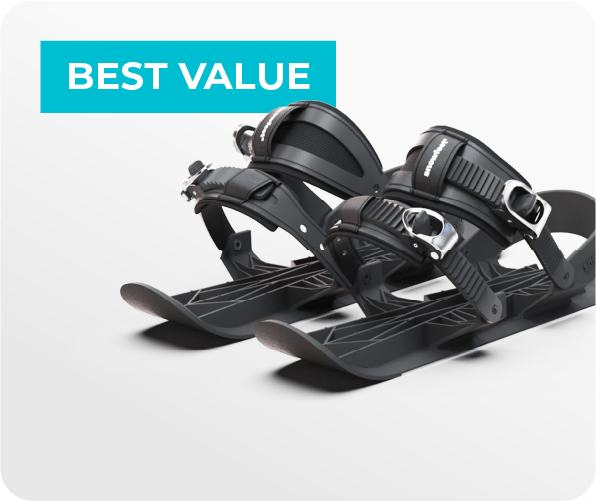



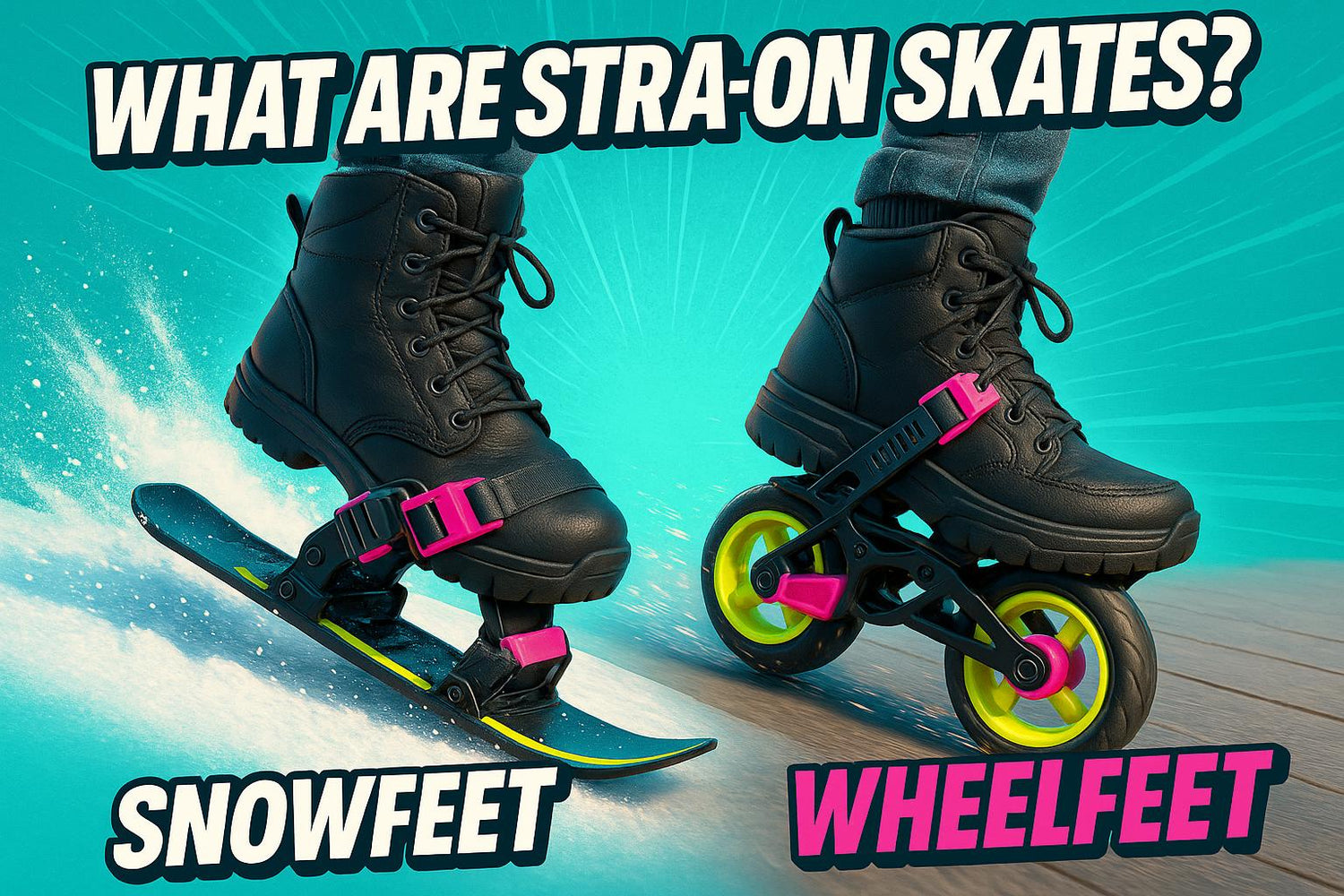
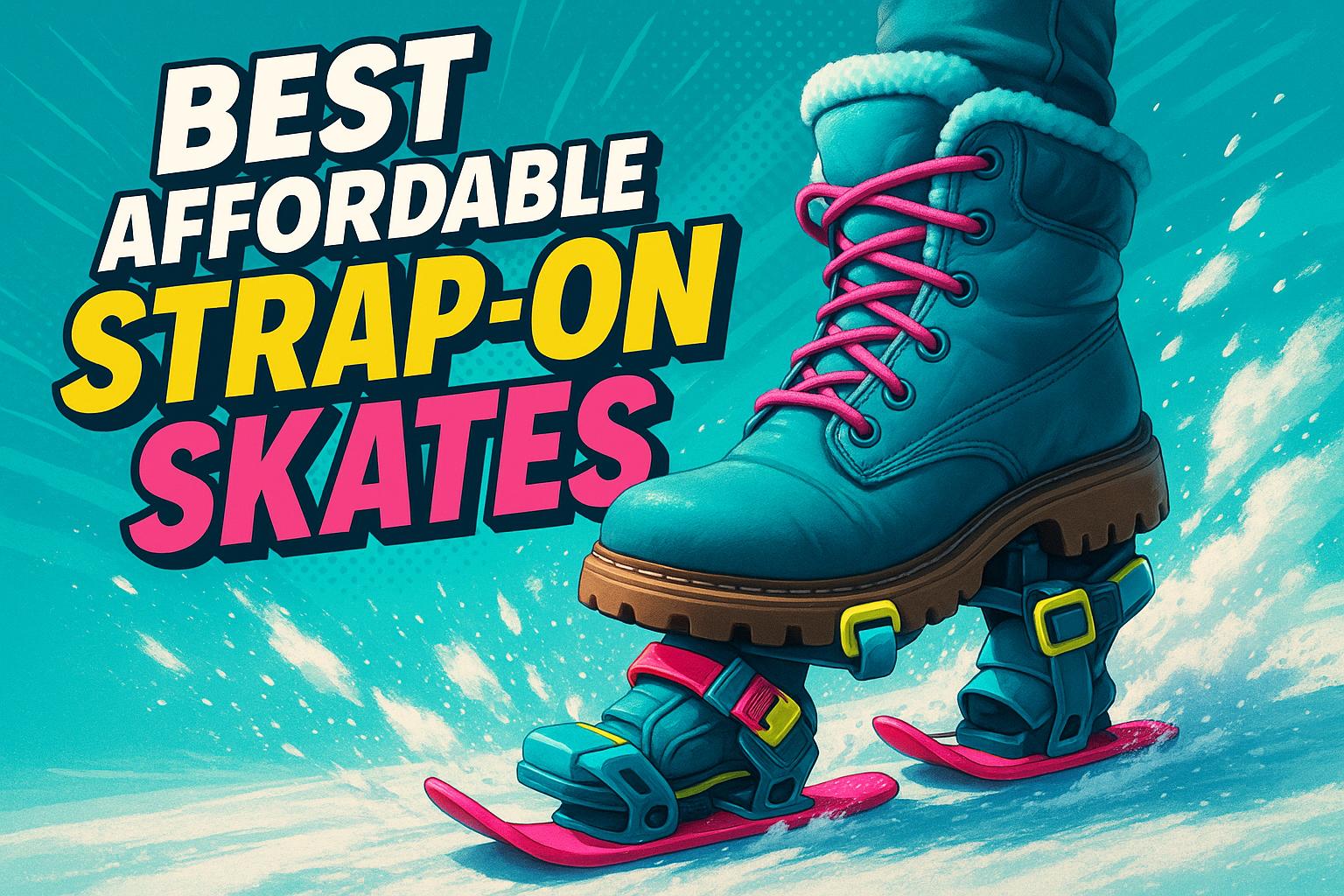
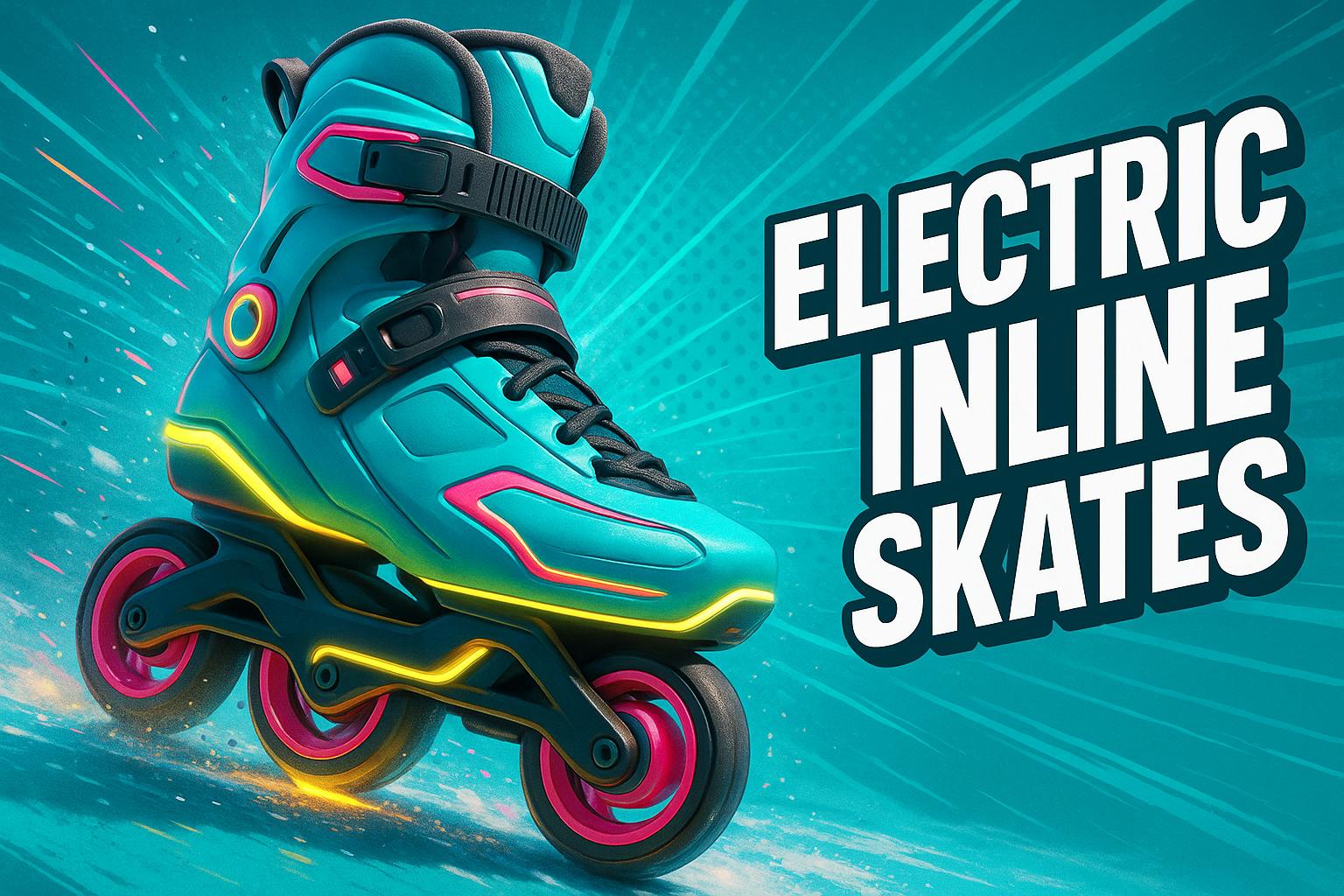
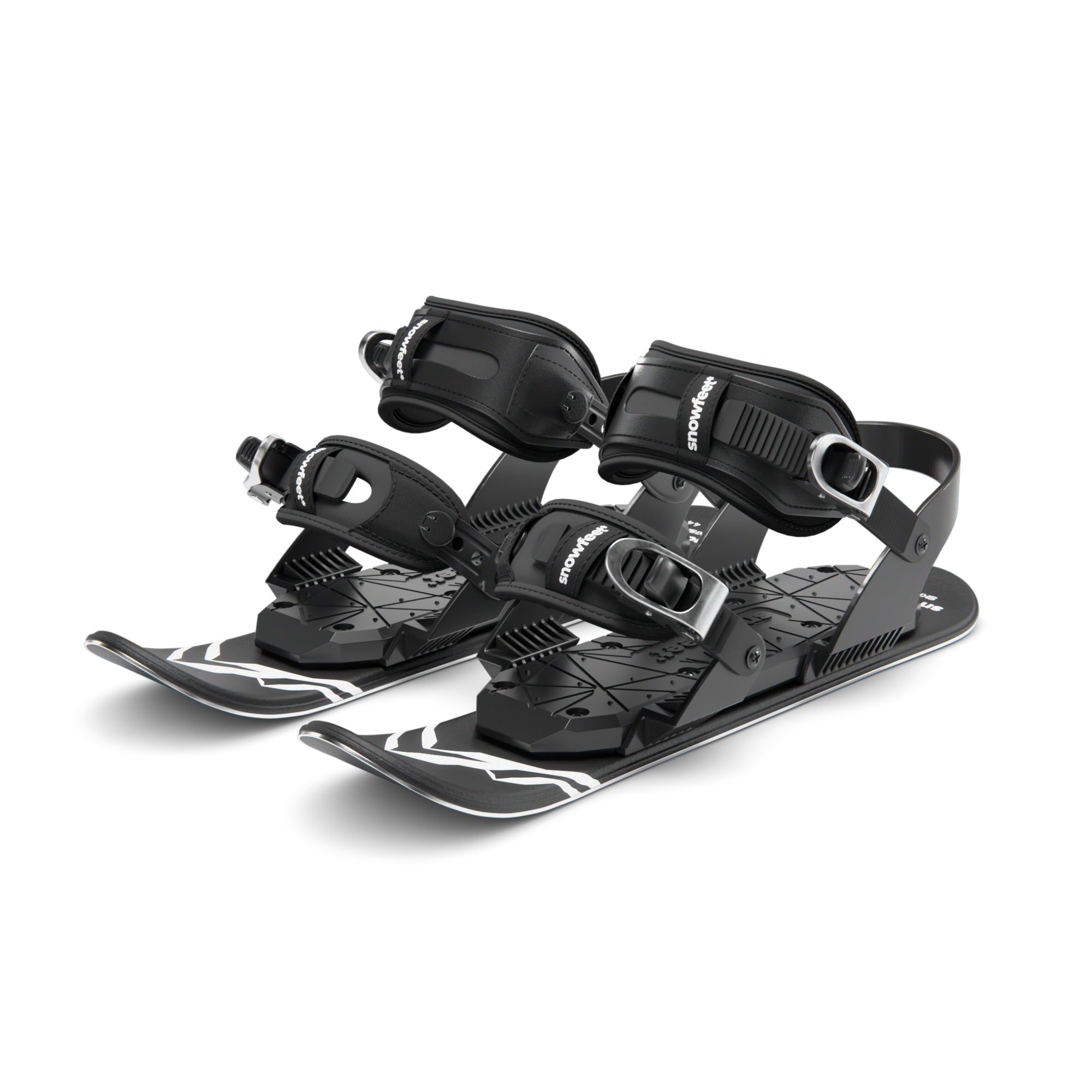
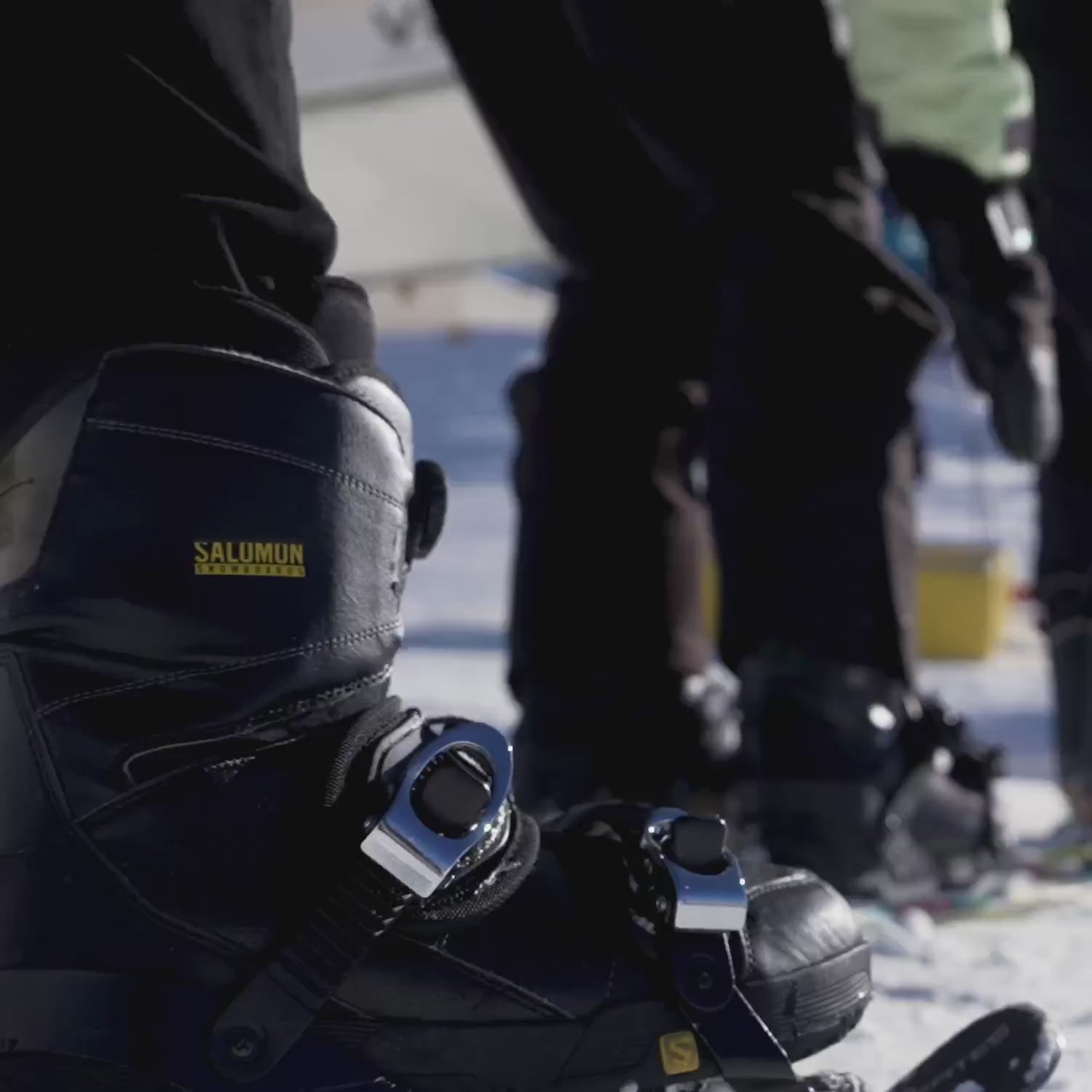
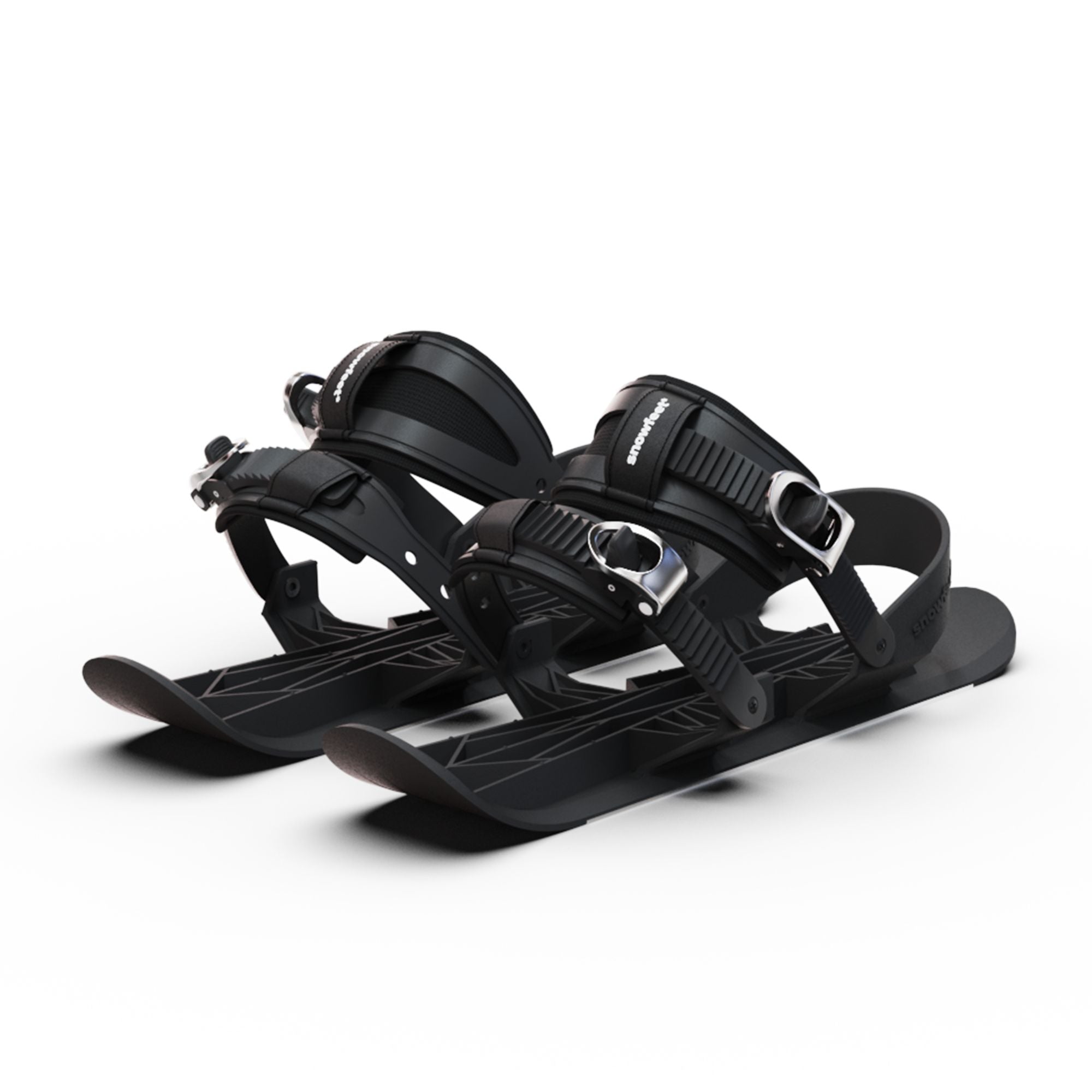
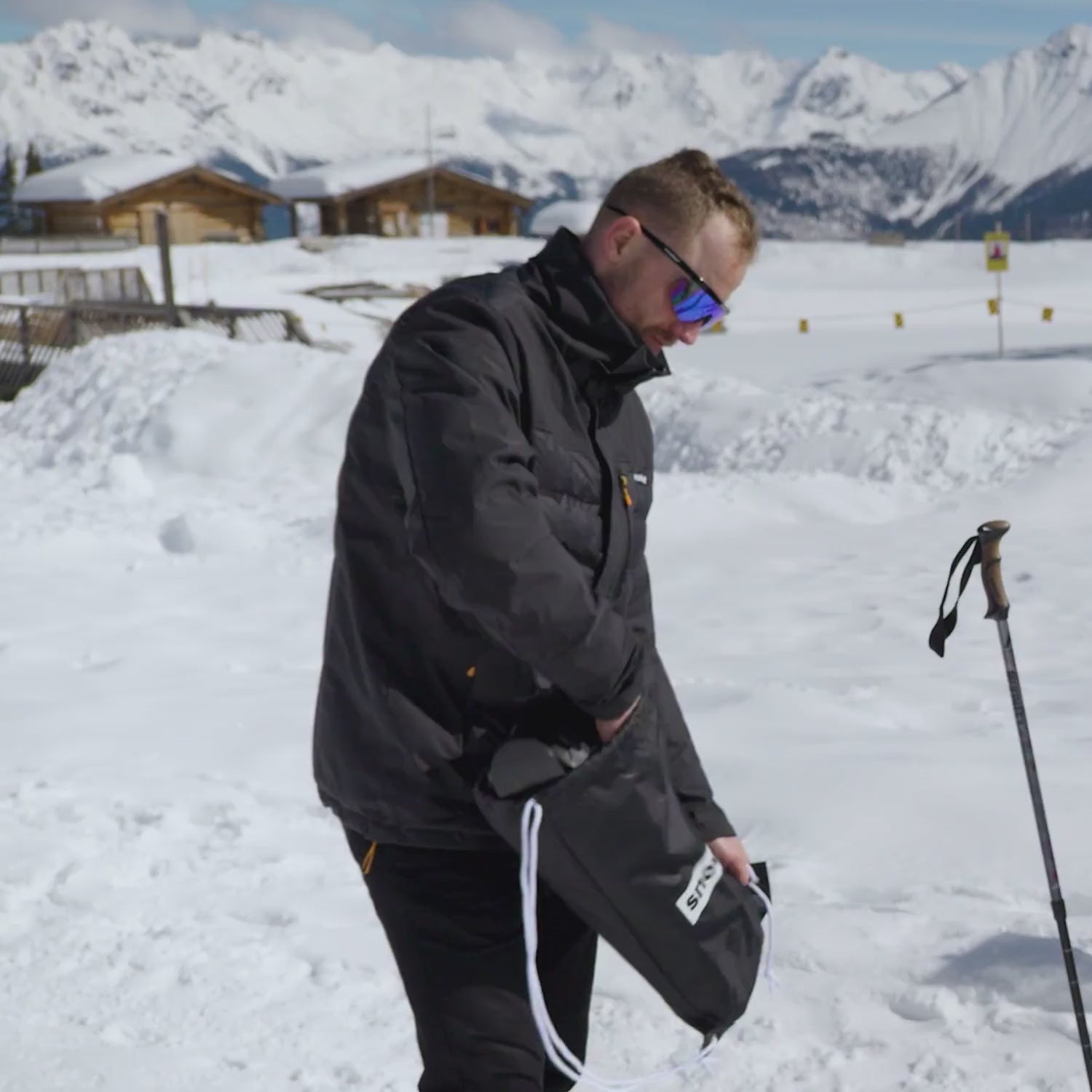
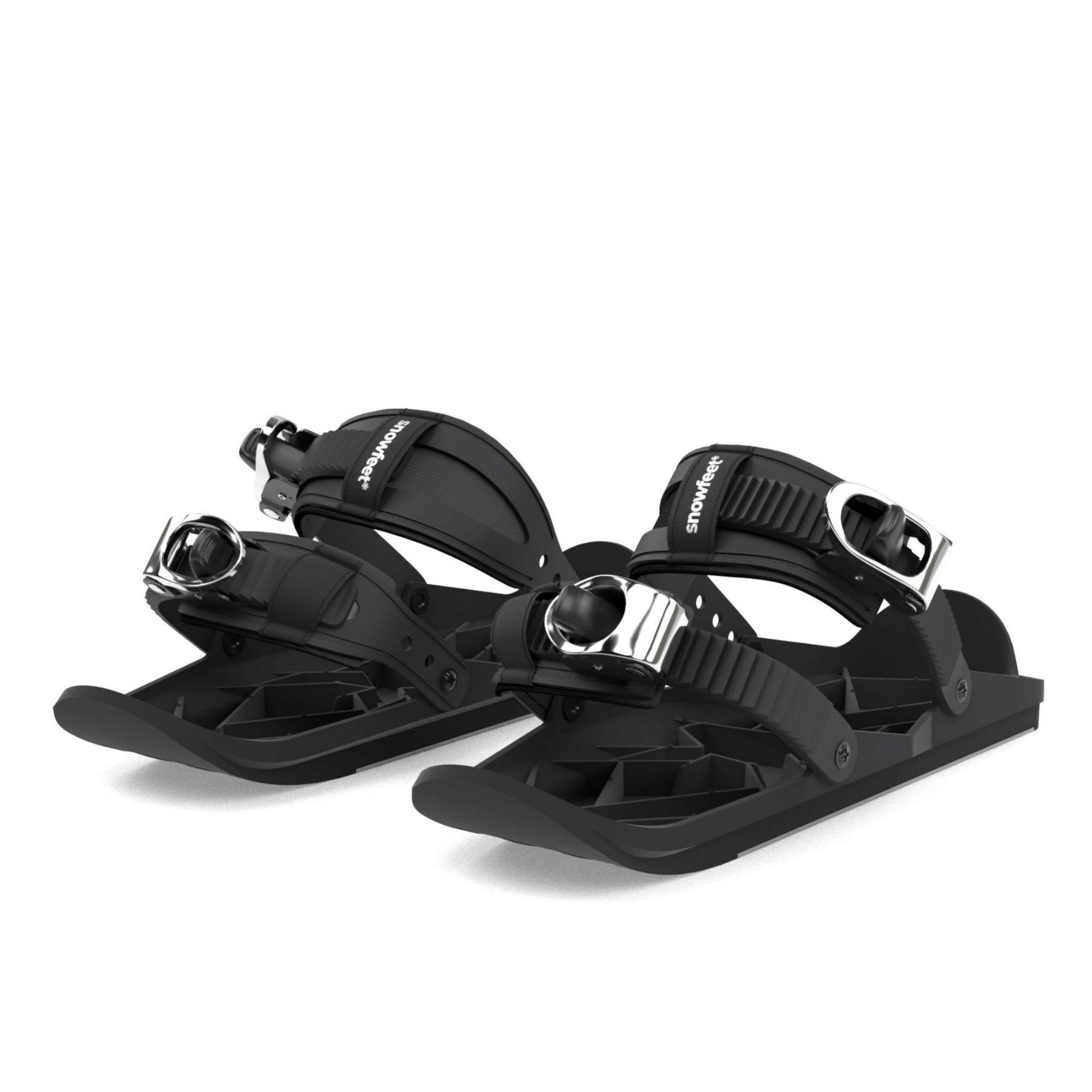
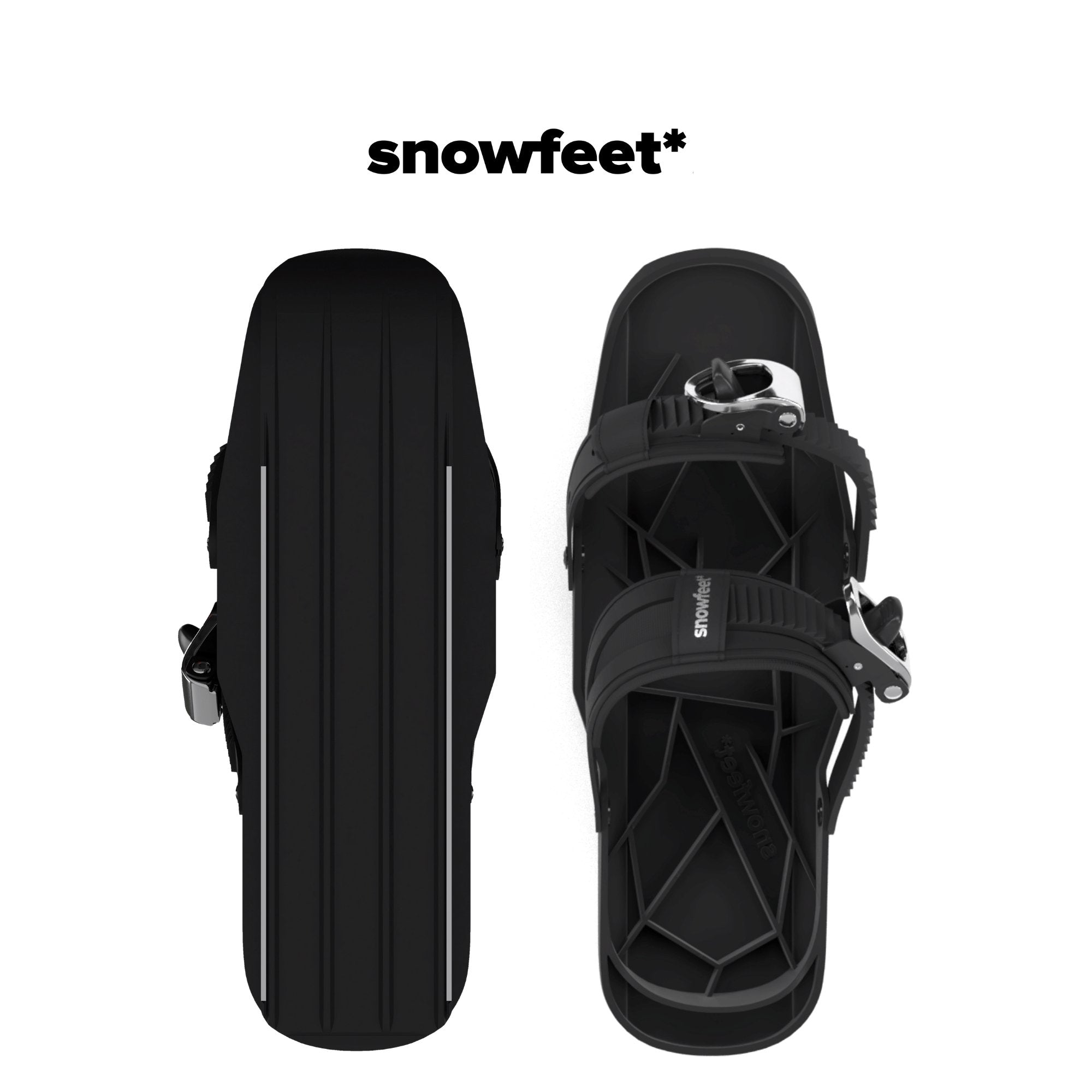
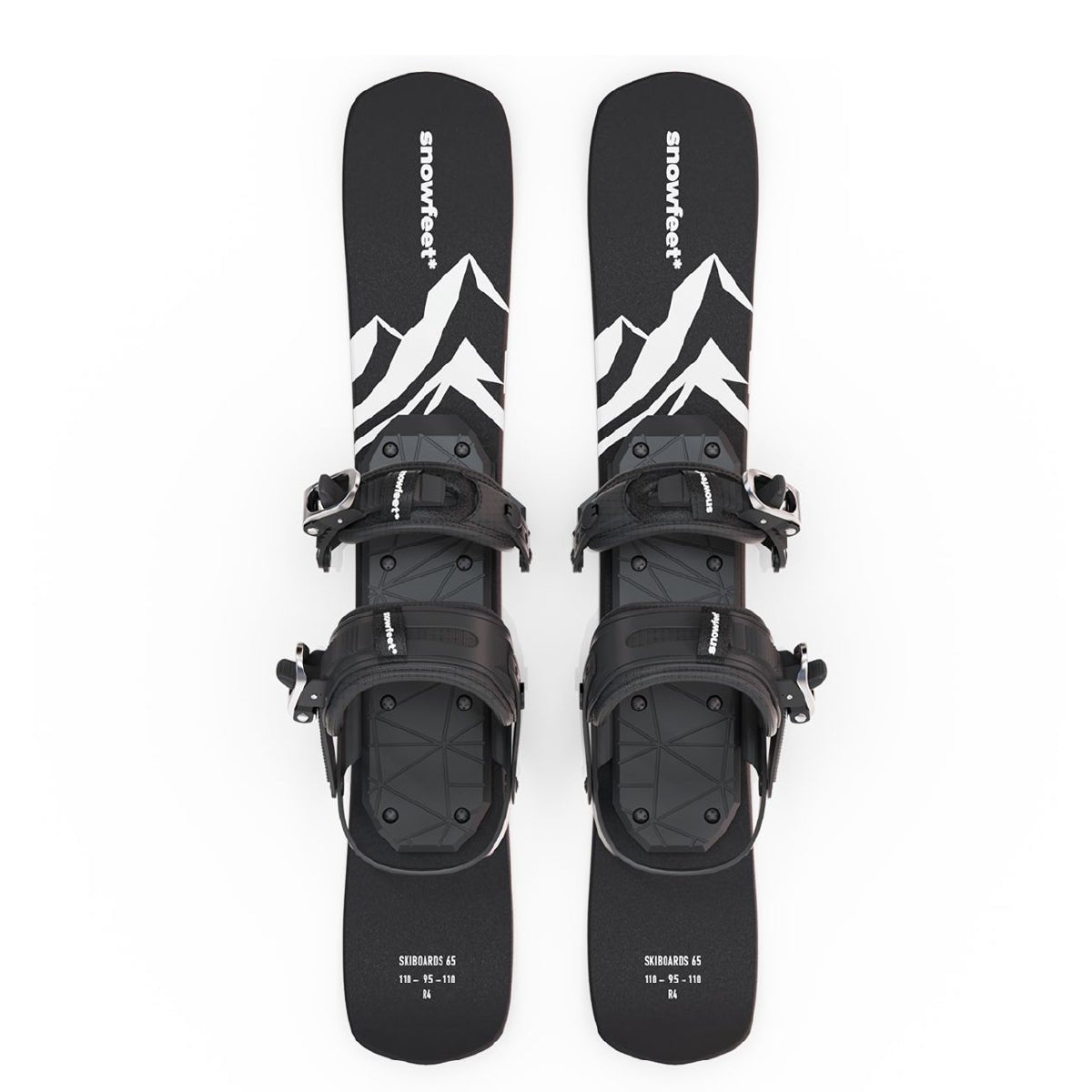
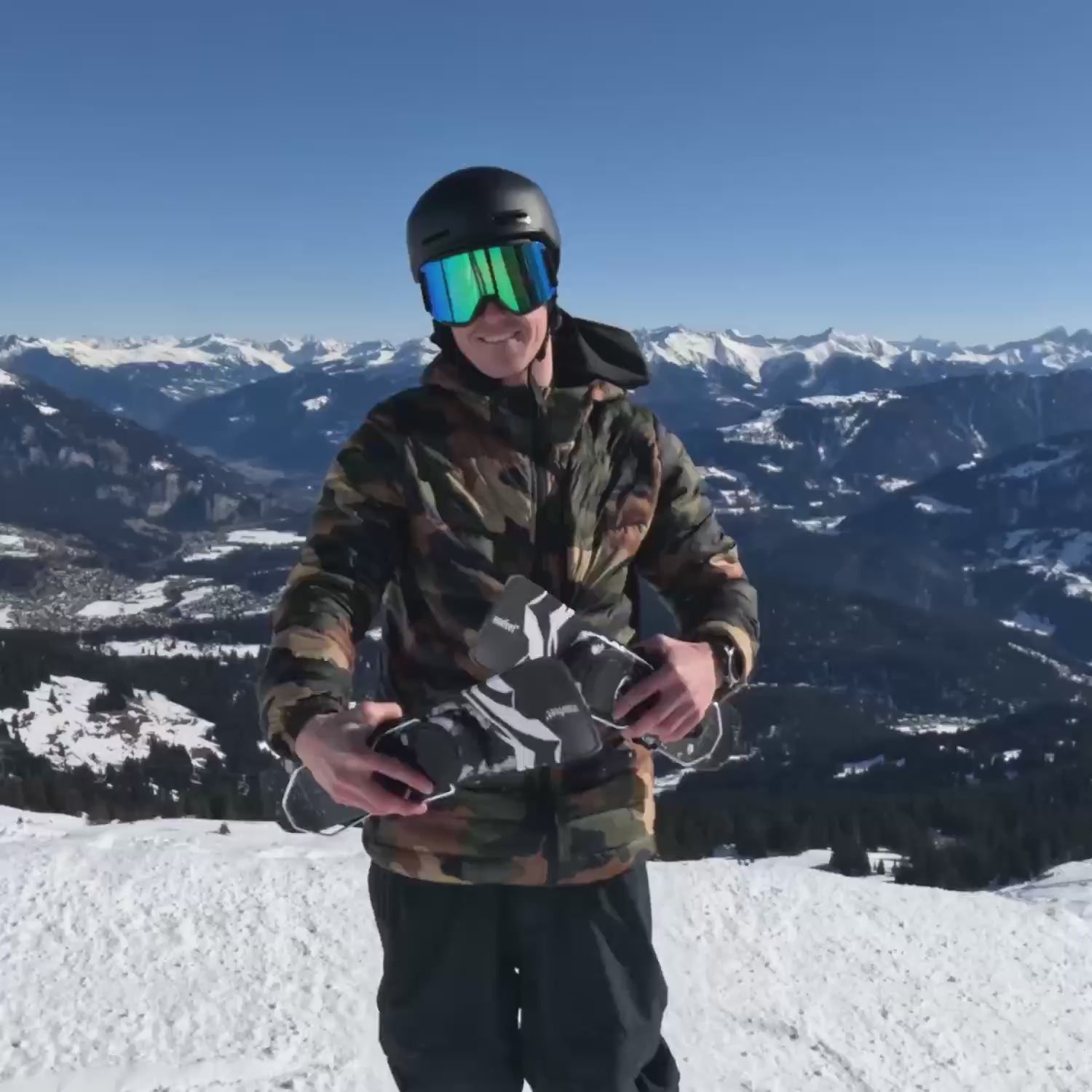
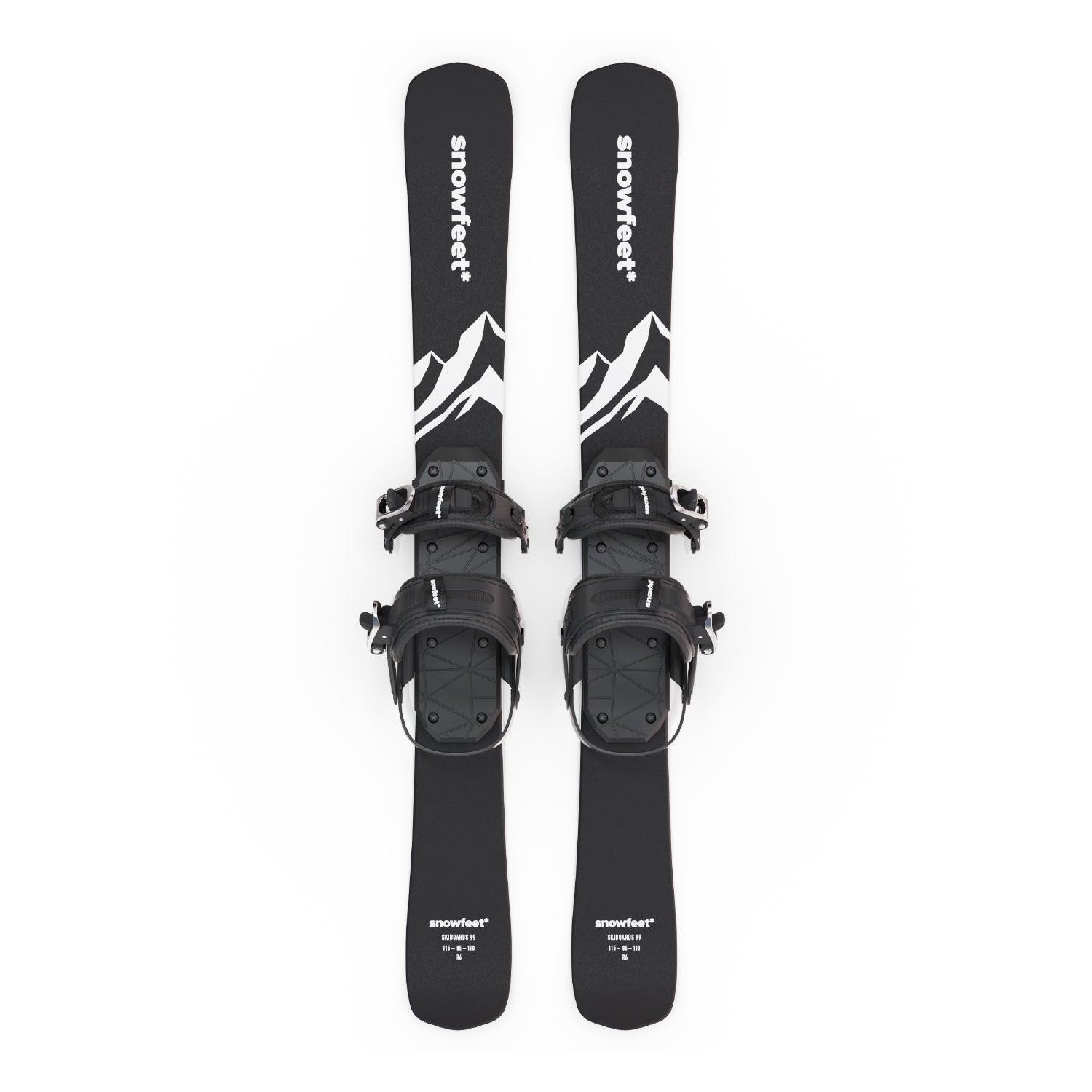
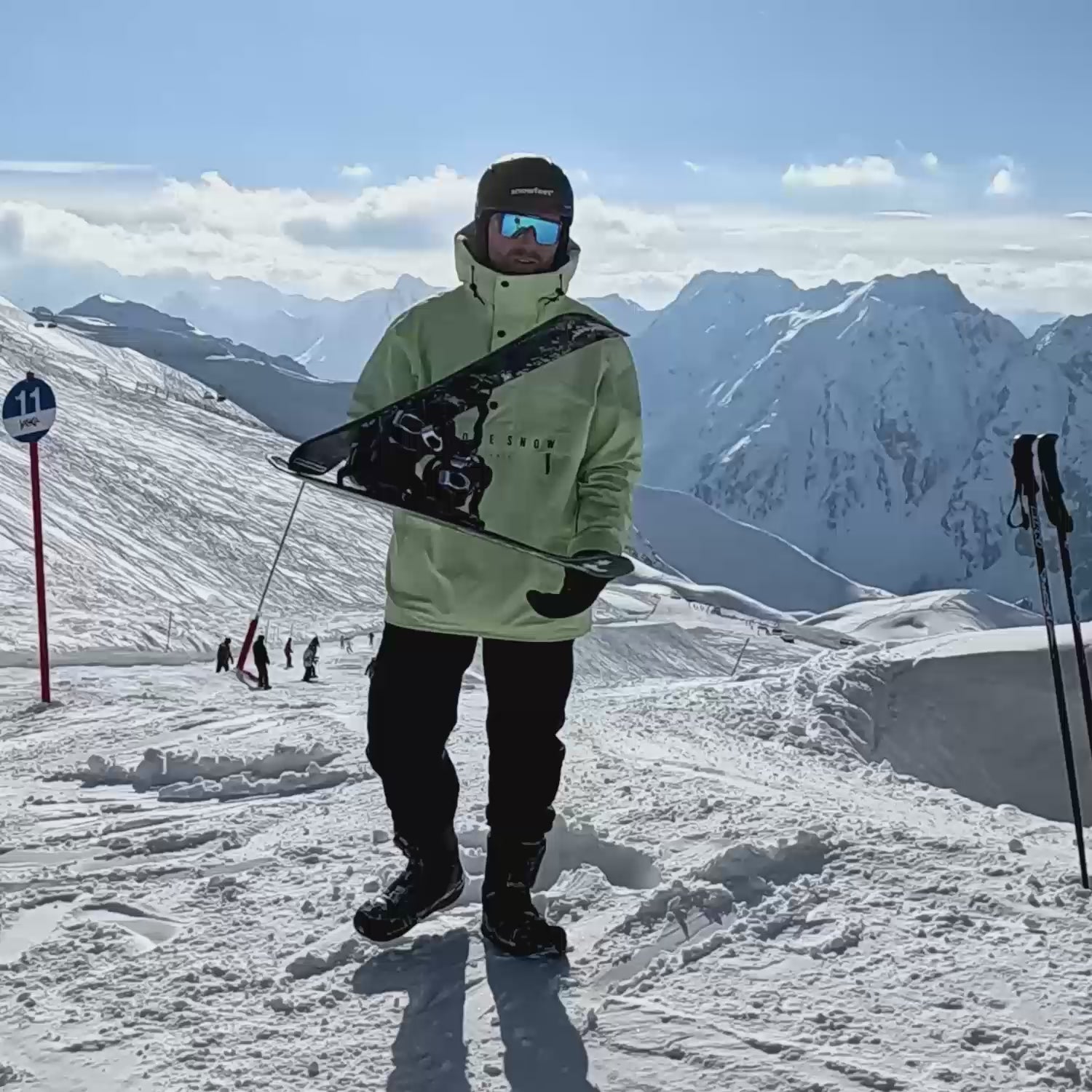
Einen Kommentar hinterlassen
Diese Website ist durch hCaptcha geschützt und es gelten die allgemeinen Geschäftsbedingungen und Datenschutzbestimmungen von hCaptcha.